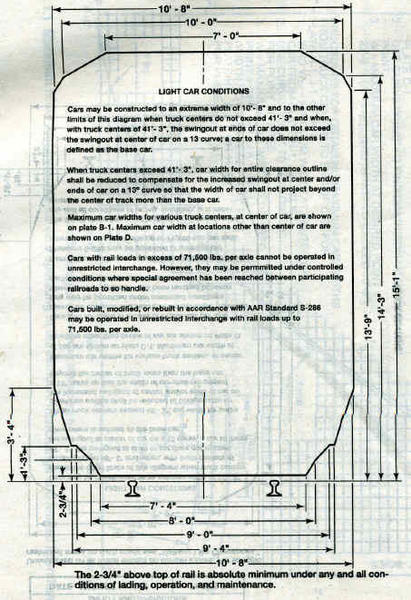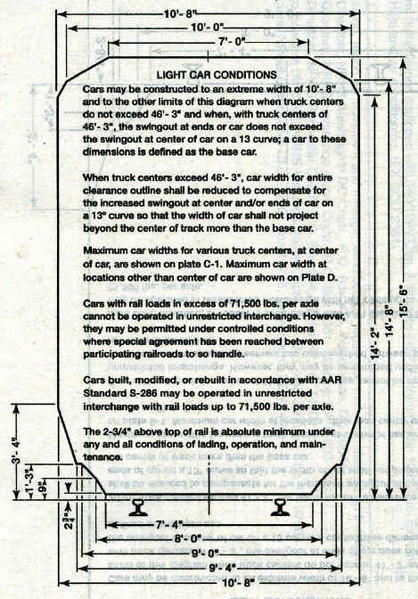Rolling stock on American railroads is typically about 10'6" wide, and has been for a fairly long time as far as I know. Current Plate B-C-E-F standards show a maximum width of 10'8", but this is reduced on cars with longer truck centers.
https://en.wikipedia.org/wiki/Loading_gauge
I suspect that 10'0" used to be a previous standard for maximum width of rail cars approved for interchange on American railroads, but how long ago was that? I'm in the process of trying to research the history on this and would appreciate any leads with pertinent information.
This is the best link for concise info that I have found so far:
http://www.icrr.net/plates.htm
PLATE B: Unrestricted interchange service standard adopted 1946. Revised 1972, 1983, 1988. (image at left above)
PLATE C: Limited interchange service standard (will clear 95% of total rail mileage) adopted 1963. Revised 1983, 1988, 1991.
















